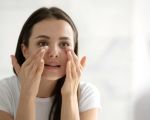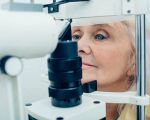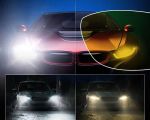- 1-Understanding-Blue-Light-and-Its-Effects
- 2-Why-Digital-Device-Users-Need-Blue-Light-Protection
- 3-Methods-of-Blue-Light-Protection
- 4-Benefits-of-Blue-Light-Glasses
- 5-Real-World-Examples-of-Blue-Light-Impact
- 6-Integrating-Blue-Light-Protection-Into-Daily-Life
1. Understanding Blue Light and Its Effects
Blue light is a high-energy visible (HEV) light emitted by the sun and digital screens such as smartphones, computers, and tablets. While natural blue light plays an important role in regulating circadian rhythms and mood, excessive exposure from artificial sources can lead to eye discomfort and long-term vision issues. The intensity and proximity of screens have made blue light exposure a growing concern, especially among frequent digital device users.
Research shows that prolonged exposure to blue light can contribute to digital eye strain symptoms like headaches, dry eyes, blurred vision, and difficulty focusing. There are also emerging studies suggesting that blue light may disrupt sleep patterns by affecting melatonin production, thus impacting overall well-being.
2. Why Digital Device Users Need Blue Light Protection
With the average American spending over 7 hours daily in front of digital screens, blue light protection has become essential. People working remotely, students engaged in online learning, and gamers are particularly vulnerable to eye strain and fatigue caused by prolonged blue light exposure.
Without proper protection, users may experience reduced productivity, eye irritation, and sleep disturbances. This is especially critical for those with pre-existing eye conditions or individuals over 40 who are more susceptible to macular degeneration risks.
Understanding the importance of blue light protection encourages users to adopt preventive measures, promoting better eye health and comfort during long screen sessions.
3. Methods of Blue Light Protection
Several effective strategies exist to protect against blue light. Adjusting device settings to reduce blue light emission is a simple first step. Most modern devices feature “night mode” or “blue light filter” options that warm the screen’s color tone, easing eye strain during evening use.
In addition to software solutions, physical barriers such as blue light blocking glasses offer targeted protection. These glasses are designed with special coatings that absorb or filter out harmful blue wavelengths, reducing glare and improving visual comfort.
Other practical habits include taking regular breaks using the 20-20-20 rule—every 20 minutes, look at something 20 feet away for 20 seconds—to relax eye muscles. Maintaining proper screen distance and ambient lighting also helps mitigate blue light impact.
4. Benefits of Blue Light Glasses
Blue light glasses have gained popularity as a proactive tool for digital device users. Users report decreased eye fatigue, fewer headaches, and improved focus after adopting these glasses into their daily routine. Unlike generic sunglasses, blue light glasses do not darken the screen but selectively block harmful blue wavelengths.
Professionals such as software developers, graphic designers, and customer service representatives have shared testimonials about how blue light glasses have improved their comfort during extended work hours. This technology is accessible and convenient, offering a non-invasive way to protect eye health.
5. Real-World Examples of Blue Light Impact
Consider Sarah, a 32-year-old marketing manager, who experienced chronic eye strain and insomnia. After consulting an eye care specialist, she learned her symptoms were related to excessive blue light exposure. By switching on her devices’ blue light filters and wearing blue light glasses during work, Sarah noticed significant relief and better sleep quality within weeks.
Similarly, a study conducted at a major university found that students using blue light blocking glasses while studying on tablets reported less eye discomfort and improved sleep, highlighting the real-world benefits of blue light protection.
6. Integrating Blue Light Protection Into Daily Life
Integrating blue light protection into your daily routine requires awareness and consistent habits. Start by evaluating your daily screen time and identifying peak usage periods. Apply device settings to reduce blue light, invest in quality blue light glasses, and practice good eye care habits like blinking frequently and maintaining screen ergonomics.
Eye Docs offers a comprehensive selection of blue light protection products and expert advice to help digital device users safeguard their vision. By combining technology and lifestyle changes, you can reduce eye strain and enjoy a healthier relationship with your screens.
Prioritize your eye health today with blue light protection strategies that fit your lifestyle and keep your vision sharp for years to come.








